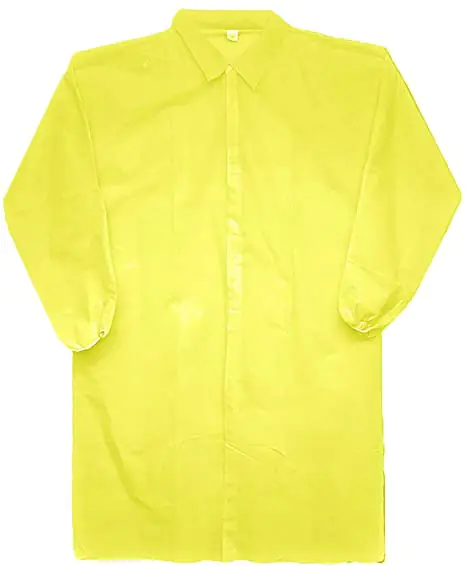Introduction
Ever wondered, why do doctors wear lab coats?
The white lab coat, a staple in the medical profession, is more than just professional attire. It carries a rich history, cultural significance, and practical benefits. But it’s also the subject of ongoing debates and evolving practices.

The History of Doctors Wearing White Lab Coats
Dating back to the nineteenth century, the white coat was typically worn by scientists, representing cleanliness and purity. Around the turn of the century, doctors started to don the white coat, distinguishing themselves as trained surgeons and aligning the medical field with the trust and authority attached to scientists.

The White Coat Ceremony
The white coat ceremony is a relatively new ritual introduced in the late 20th century. It marks the transition of medical students into the school of medicine. The ceremony symbolizes the commitment to uphold the ethical standards of the medical profession.

The Significance of the White Coat in the Medical Field
The white coat has become a symbol of the medical profession. It distinguishes doctors from other hospital workers and helps patients identify their caregivers. In a hospital setting, the white coat can also serve as a barrier, protecting doctors from potentially harmful substances.
The Psychological Impact of Doctors Wearing White Coats
The white coat can have both positive and negative psychological impacts. On the positive side, it can foster trust and respect. However, it can also contribute to what’s known as “white coat syndrome” or “white coat hypertension” where patients exhibit high blood pressure readings due to anxiety associated with a doctor’s visit.

The Practicality of Wearing White Coats
Apart from being a professional attire, white coats serve a practical purpose. They provide coverage, protecting the physician’s clothing from messy stains. The pockets also provide convenient storage for medical tools.

The Evolution of Lab Coats
Initially, doctors wore black coats, but this changed in the late 19th century as white became associated with cleanliness and sterility. Today, long sleeved coats are common, but short white coat styles are also popular, particularly among medical students.

The Controversy over Doctors Wearing White Coats
Despite their benefits, white coats have been criticized for potentially contributing to hospital-acquired infections. Some argue that doctors should wear street clothes or medical scrubs instead, as lab coats can harbor and spread germs. This debate is particularly relevant in major hospitals and academic medical centers where patient safety is paramount.

The Dress Code in Different Medical Institutions
Different medical schools and health-related schools have varying dress codes. While some insist on the traditional white coat, others like the Michigan Medical School and Canadian Medical Association have adopted business attire or medical scrubs as acceptable workplace clothing.
The Use of Disposable Lab Coats
To mitigate the risk of infection, many healthcare professionals have turned to disposable lab coats. Made from materials like PP, SMS, Microporous, PP+PE, and PE, these coats can be worn and then discarded, minimizing the risk of carrying and spreading pathogens.

The Future of Doctors Wearing White Coats
As healthcare evolves, the tradition of doctors wearing white coats may change. With the rise of evidence-based medicine and emphasis on infection control, more healthcare providers may opt for disposable lab coats or other alternatives.
Conclusion
The tradition of doctors wearing white coats is deeply rooted in medical history and culture. Despite evolving practices and ongoing debates, the white coat remains a powerful symbol of the medical profession.

FAQs
- Why do doctors wear lab coats?
Doctors wear lab coats for professional, practical, and symbolic reasons. - What is the white coat ceremony?
The white coat ceremony is a ritual in medical schools that marks students’ transition into the medical profession. - What are the materials used in disposable lab coats?
Disposable lab coats are made from materials like PP, SMS, Microporous, PP+PE, and PE. - Why is there controversy over doctors wearing white coats?
The controversy stems from concerns that white coats can harbor and spread pathogens, potentially contributing to hospital-acquired infections. - What might the future hold for doctors wearing white coats?
As healthcare evolves, practices may change. More doctors may opt for disposable lab coats or other alternatives for infection control and patient safety.











